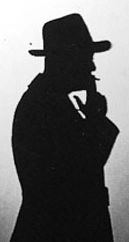DiamondElbows’ class on Defensive Wrestling in MMA, Part 2: Strict Takedown Defense, Part One; Separation from open space shots

Disclaimer: a lot of these are gonna be straight up bad shots, but they still illustrate certain important principles that I’d like to cover here, so um, anyway, here we go.
Also GIPHY won’t let me upload long sequences so GFYCAT and GIPHY will be switched between
Welcome back y’all, this is DiamondElbows, here to take you through part two; separation from open space shots. If you missed part one, it’s here.
To the untrained eye this is the most obvious defensive grappling maneuver, yet this will probably be the longest article of this series because it’s down to the tiniest details. Like I said, this is the easiest to spot; your actual skill in wrestling exchanges. This is what transfers the best from all those olympians and all-americans and sambo champions; what to do when people grab your leg in the center of the mat. Nothing really “MMA” related yet, just good ‘ol fashioned wrastlin.
Of course; the individual responses to each attempt vary significantly, so I will divide this into four components;
One, the initial response.
Two, mitigating or competing in the longer wrestling exchanges.
Three, the clinch
Four, the cage
We will cover about one and a half for this article, by the way.
As a grappler with the striking abilities of a paralyzed toddler, this is the most familiar aspect of defensive wrestling for me, so hopefully those who are less educated on the specific nuances of it can get something out of this. Wrestlers will nod their heads and agree, but hopefully the few wrestlers less knowledgeable than me (DiamondElbows is a mediocre practitioner, FYI) can gain a more conceptual understanding of it rather than being limited to strictly practical application.
The obvious response to a takedown attempt is to sprawl. Fast.
“Good hips” is in reference to one’s ability to sprawl on a shot, and stifle the attacking wrestler’s momentum. What’s important here are two things.
One: how fast the reaction was

Two: contact with the hips
If your sprawl was slow as hell, that’s obviously not a good sign. A good shot requires momentum and drive, so slow sprawls simply get bowled over.
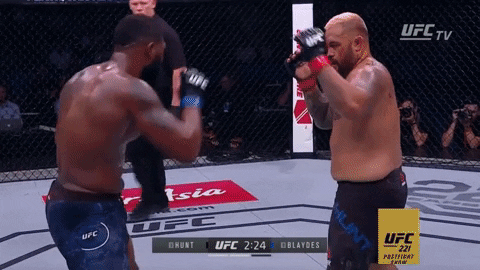
If you react fast enough from the outside, their hands are too far from your lightning-fast, far out hips in order to grab anything. You are probably going to face-plant if you’re the wrestler. On the other hand, if you’re slow, and the sprawl isn’t timed well, they’ve got to your hips, and probably have taken you down.
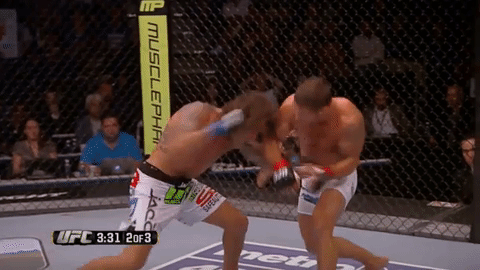
The second is about destroying their contact with your hips. If you’re fighting a good wrestler, they’re going to be able to make contact eventually. But when they get a good shot in, how fast do your hips separate from their hands?
This is the second thing about a sprawl in MMA; a good shot is about penetration, or getting deep on the takedown, especially in MMA;
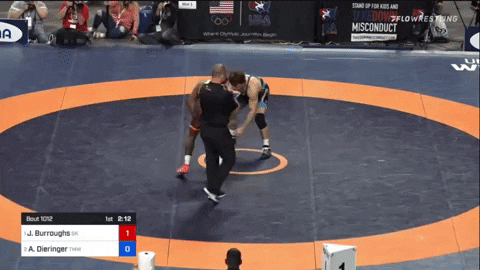
In mat wrestling, competitors are forced into a small area and have the objective to engage at that range, in close. And in freestyle, being pushed out of it means a point for your opponent. In both folkstyle and freestyle, not meeting your opponent in the center results in stall warnings.
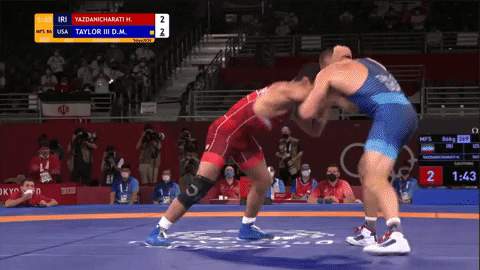
There is no such obligation in MMA; as a result, because of how far the distance is, closing the distance and getting a good entry on a shot is the most important aspect of taking people down in MMA(article series may come out after); in more conventional terms, this is getting as close to them as possible in order to keep a good grip on them. If they can only touch your hips for a second or two and are thrown off completely, that is a good thing, and pretty impressive.
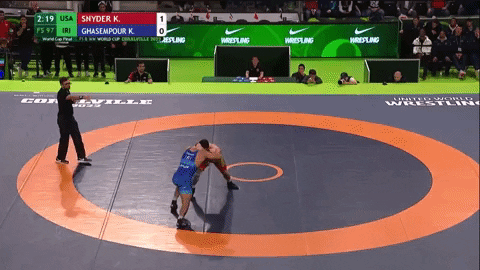
Any good shot is going to make contact with you at some point, assuming you’re fighting a good wrestler. Actual contact is ok in terms of strict TDD; avoiding contact altogether is something that will be discussed in part four. If you can rip your hips free of said contact and prevent extended periods, however, that’s not a cause for worry.
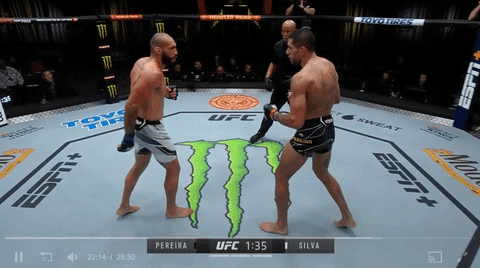
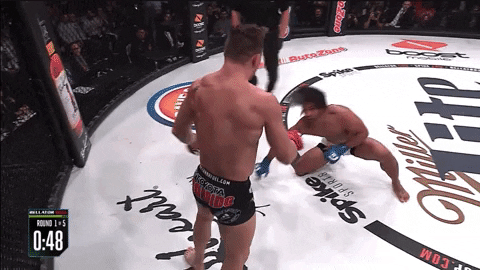
Now, of course, it is possible to badly, badly time it.
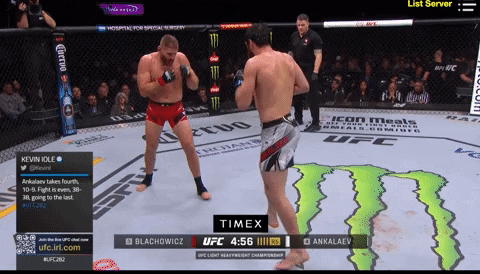
Or like, not do it at all, an example of which you’ll see later.
There are few and far examples of hip wizardry in MMA, because it’s such a rare thing to have. It takes insane reaction times and dexterity; people like Whittaker, Aldo, Jones, and, underrated shouts, St-Pierre, are rare.
A good sprawl not only brings one’s hips away, it puts all of one’s weight on an opponent’s grip, hopefully destroying it as I said, and destroys their posture while halting their drive; the principles of a good shot, but in reverse. Additionally, we have the next two basic techniques, as any wrestler knows; stuffing the head, and a whizzer.
Stuffing the head destroys their posture even more, forcing the wrestler to either drive with their head down, or get their head up, and then drive. People like, say, Koscheck, who could simply hulk through this, are one in a million. Most of the time, when done correctly, wrestlers face-plant on the ground. You can push down and away on the head to destroy their posture, like you saw with GSP and Koscheck there.
Or cross-face them hard and intercept their momentum, then throw back with force of your own, breaking it completely. A cross-face meets the momentum head-on, stuffing the head redirects it into the floor. As long as they achieve their goal, both are perfectly fine.
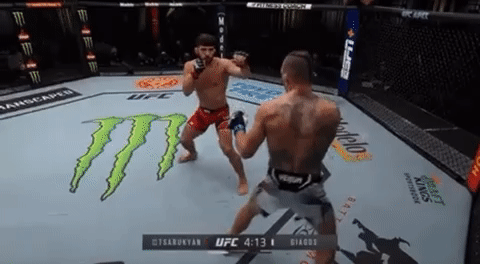
And if you don’t do it fast enough, or at all, you’re going down.
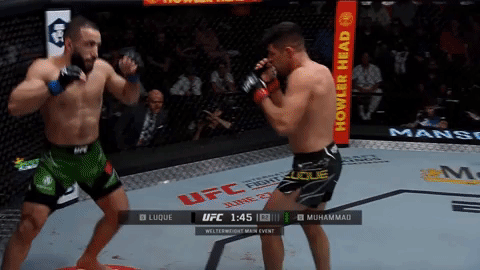
The other basic technique is the whizzer; this iron bar of an arm prevents the wrestler from getting any sort of angle, and puts immense pressure on their grip.
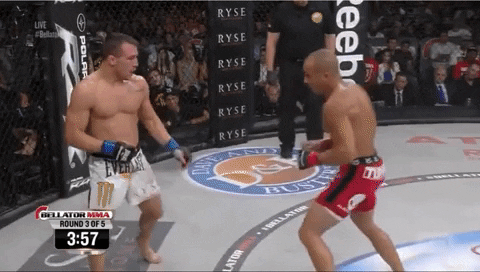
Notice the good whizzer mechanics: it’s sunken deep, with a tucked rather than flared elbow, and Eddie is putting his hips and weight into it. If the whizzer is poor and weak, there isn’t much of a barrier to get past. The elbow should be down, and one should be putting weight and strength into it, not letting the elbow get flared up, and, as you’ll hear me beat to death in this article, put pressure on their grip.
And if you lose it, the barrier is gone, and you’re going down.
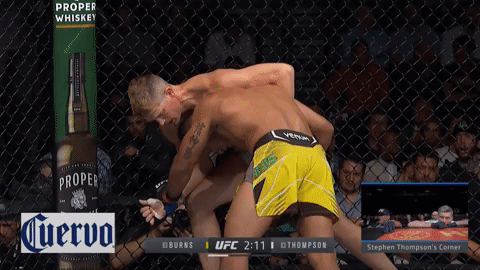
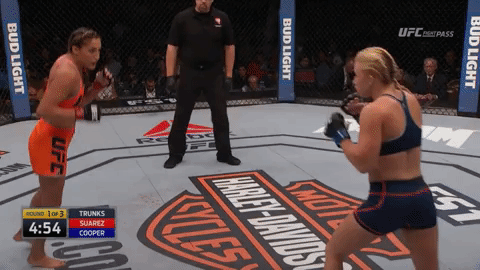
This applies to any of the three most basic takedown entries; the double leg, the head inside single(or just single leg, just to make it more basic), and the head outside single(or the high crotch). Stuffing the head inward if the head is on the outside, whizzering hard, and getting one’s hips back. Even other avenues, such as what some call “putting on the pants” when a single leg is attempted.
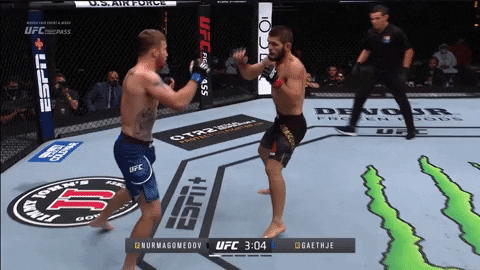
However, the principles are universal; break the posture and grip, get one’s hips away from the opponent. I can’t think of any other ones other than, say, this, which will be covered eventually
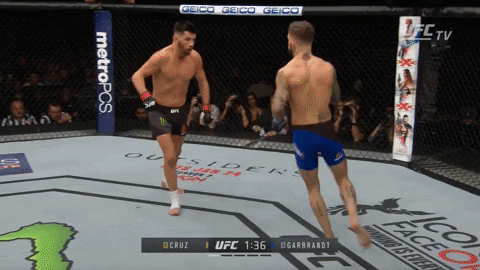
Now, let’s say you didn’t rip his hands completely free with your sprawl, as is often the case. In this case, you must get to a certain position in order to completely destroy their momentum and drive. Notice how the defensive wrestler immediately squared up completely with the offensive one in every good sprawl shown so far.

Once the drive of the shot was mitigated, the currently static wrestler is desperately holding onto a leg; if they’ve shot a double, they’re desperately holding onto a single leg now, and the job of the defensive wrestler is to completely lock them down there.
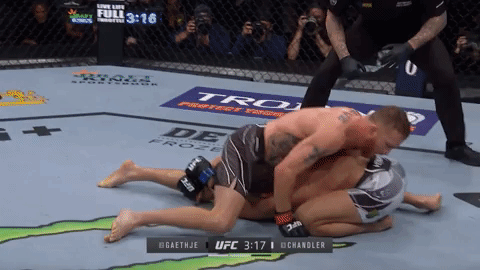
Circling towards them, ensuring that their head is down, and making them completely extended, which destroys their ability to get up, and pushing off of the hips puts even more strain on them. If they drive hard, trying to get around your body and finish the shot, circling with them destroys their advantageous angle and stifles their momentum.
From here, one can go to a front headlock series
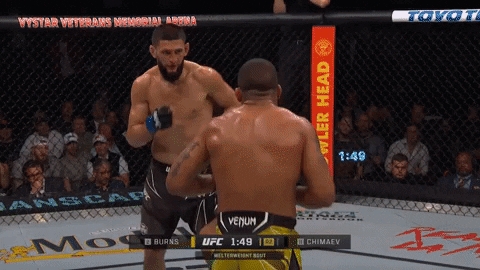
Or a reversal
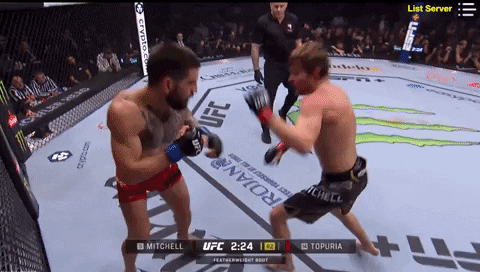
Or even elbow the head, though I wouldn’t recommend this one, as the effort and focus into the elbow can get you taken down.
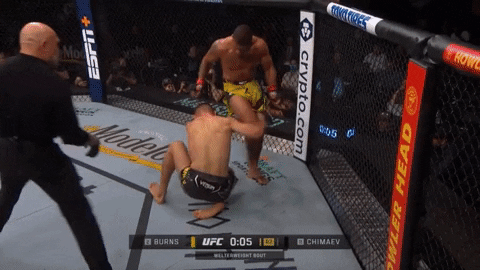
This breaks their grip if your initial sprawl didn’t do it already; I would say that urgency and speed are key here; the second the grip is established, you need to fight it off instead of wasting useless time punching them in the face.
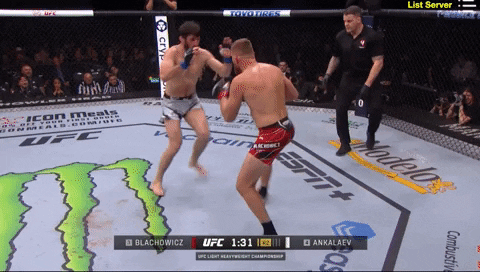
I love Jan, but bro, why.
This, by the way, is the key difference of when to punch or elbow them. Do it after you’ve established your needed position, and only for a little bit and for a specific purpose: for instance, Gaethje elbowed Chandler’s exposed head to force him to tuck it in, which is what he wanted anyway, and Justin could generate power off of his elbows from that position. There was no reason for Jan to punch Magomed, and there was no power generated from one leg.
There are other methods, such as underhooks, but in my opinion this often only works against lower competition. See Darren Till’s career. A favorite mutual of mine, @schwick6 made a good post about the flaws of Till’s defensive grappling
Spoiler: it’s about his hips, and this is what I meant about not sprawling at all
This brings us to stage two: mitigating or competing in the longer wrestling exchanges.
Let me explain chain wrestling to you for a second; chain wrestling is when a wrestler, who has failed his initial shot, is forced to find ways around the defenses by getting to certain positions.
This will be explained more in depth if I cover offensive wrestling, but think of it as a series of doors leading into several rooms, and each room has potentially more doors and even more routes to go through.
The key to door one requires one to get into position X, allowing them to potentially unlock finish Y, which, if that fails, puts them in position Z. A deep chain wrestler is one that has as many doors as possible, and ways of breaking the defending fighter’s position. This often manifests as diverse finishes, and long wrestling sequences where they don’t seem to give up, and continue trying to finish their takedowns.
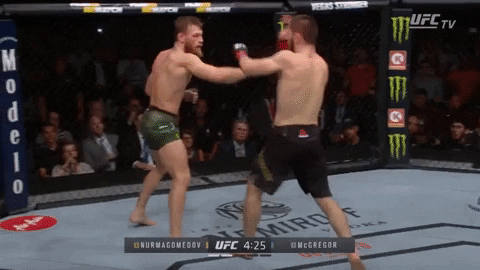
Chain wrestling is defined as simply a series of finishes that are unlocked in the event that one finish fails. The lines are pretty clear between one successful finish:
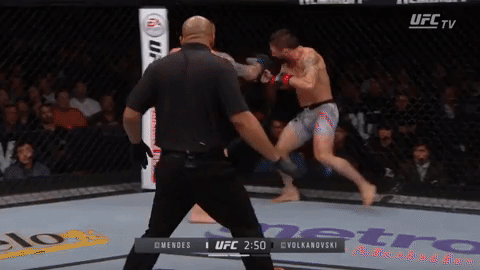
And multiple attempts leading up to a finish.
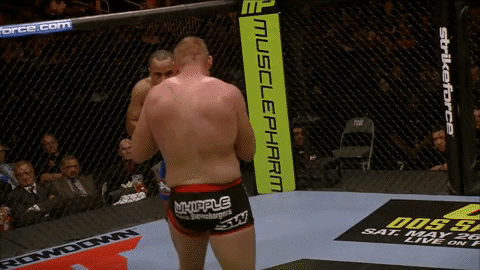
So think of it like this: Chain wrestling refers to the multiple opened doors, to go back to my analogy. If Mendes or St-Pierre shoot, because of their fantastic entries, they’ve got a crowbar to help them with an irrevocable access code to the first door and the first door only; running their feet and cutting the angle/turning the corner. Khabib, on the other hand, has a large keychain with many keys to many doors.
So as a result, I will call some things in this article chain wrestling that may not be chain wrestling in the traditional sense, but to keep things simple, will be referred to as chain wrestling, because “denying the finish” sounds stupid as hell.
I’ve already covered open space double leg defense, and stopping that initial drive and face-planting the wrestler. The typical response, bringing one’s head up and turning the corner, can be defended by sprawling harder and stuffing the head harder.
Most of the time, as I already mentioned, they switch desperately to a single leg takedown. Not only is it way easier to grab ahold of one leg rather than two when you’re sprawled out completely, with lower width to grab, single legs require a slightly different defense to doubles, and pretty much every single committed chain wrestler in MMA prefers the single leg.
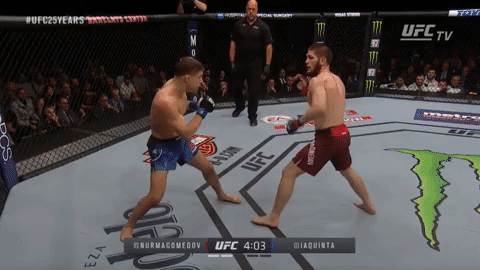
They’re more likely to result in a chain sequence; in fact, pretty much all chain sequences start from singles, from a failed double leg transition to Mateuz Gamrot.
So the chain wrestler has two options; go all the way forward, and posture up into an iranian, or try to get around them/establish a dominant angle.
The former is so uncommon in MMA that I don’t think it should be covered, but the latter is extremely common, and as I, among others, have bemoaned on twitter multiple times, MMA fighters really don’t know how to defend single legs. As I once joked, they just spin a lil and grab the shorts. From slow reactions
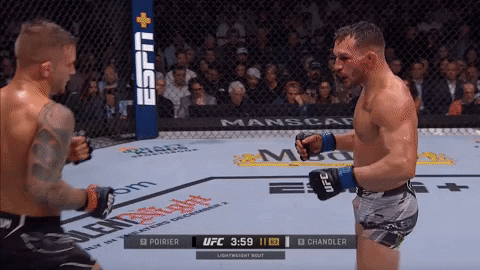
To poor understanding of positioning.
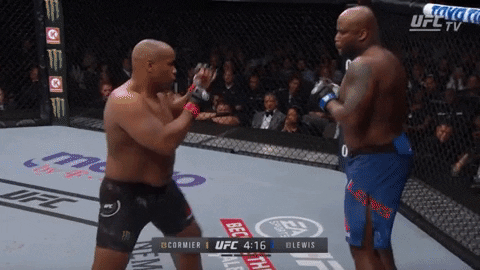
So if you want to learn how to defend a single leg, look at prime Jose Aldo.
Notice the fact that Aldo is enforcing his own angle when defending a shot with everything; his footwork, his hands, etc. The wrestler wants to get all the way around, or completely 180 in order to potentially lift the leg up, unlock a trip, etc. Aldo says no, you aren’t getting to that angle in the first place. He eventually lip legs or rips the leg free, resulting in a failed takedown.
If the wrestler has the angle he wants on you, whether it be from a fast initial shot:
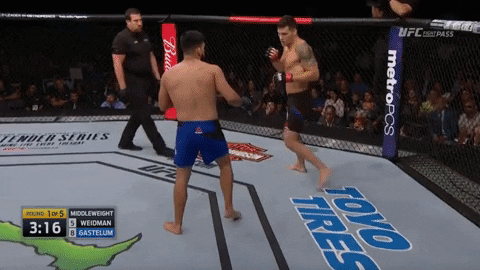
Or a sequence where you were unable to deny the position he wanted:
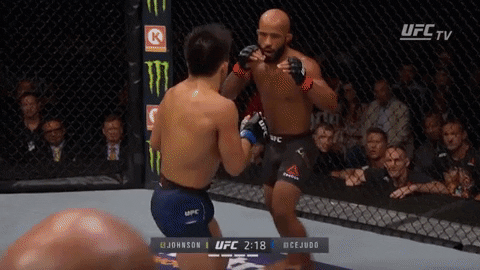
You’ve failed at your task.
The takeaway here is to deny the wrestler the position they need to chain. You haven’t taken their keys away, you’ve funneled them into going into one door specifically, and then barred it up. You do not need to play their game of dealing with every possible finish, because you’re refusing to play that game in the first place. Is the chain wrestler significantly deeper than you the longer the fight goes? Possibly, but does it really matter? Not really, since they cannot unlock it.
The thing about chain wrestling is that the wrestler has a much higher hill to climb. Sound positioning and strong barriers to crossing certain positions can mitigate a gap in depth. If depth is “how far you can go,” then the defense I describe is “you can’t even get into your car to drive, and I’m going to make it a nightmare for the car to even start.”
So let’s get into specifics, shall we?

The keys to me are funneling people into the positions you want, fighting off their grips to make chaining a nightmare, and being a stone wall in your preferred positions to prevent you from breaking them.
In terms of fighting grips, it gives the chain wrestler another barrier; how do you chain if you cannot lock your hands? Ripping their hands free and separating them pauses the whole sequence.
But if they can lock their hands, well:
Jones is the 2nd greatest defensive wrestler in MMA history btw; notice how he breaks Cormier’s posture by moving his head around, makes his leg a nightmare to budge by bending it downward, and has the length and balance as a backup in case Cormier manages to trip him: Cormier was never even able to attempt a decent trip to respond to, because he couldn’t get past the barriers. Jones basically locked all of the doors. He funnels Cormier into a clinch exchange, breaking the grip fully. And Cormier himself illustrates bread and butter takedown defense.
It doesn’t matter how many finishes Borg has from this position, or the depth to his chain wrestling as I said, because he’s stuck here. DJ is denying him the ability to get past a certain stage, or unlock the door, hence, Borg’s chain wrestling diversity is rendered completely meaningless. For a more advanced video on this position, click here and here.
Strong whizzers and positioning put absolutely incredible amounts of pressure on a wrestler’s grips. The wrestler is forced to overcome this before they even start their sequence; it exacerbates an already difficult task. Strong whizzers, as well as gripfighting, also completely cut off future wrestling exchanges because they cannot physically grab you, so their wrestling skill and depth is completely meaningless.
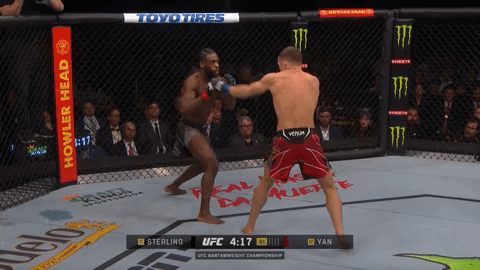
This completely cuts off the wrestling exchange by denying the grip; Aljo can know all the trips and finishes he wants, or run his feet as much as he wishes, but all of that is shut out by a single strong grip in that very instant. It’s barricading the metaphorical door.
These principles are universal as well, and apply to the countless ways to chain wrestle, from Khabib’s trips, to guys like Maia who swept from halfguard into a single leg; an extremely exotic position.
In case you didn’t notice, this author loves Maia.
Fortunately, the halfguard sweep is a way around single leg defense, not a way of avoiding the single leg itself. Notice how Maia’s arm is still occupied by the whizzer; he’s trying to bring his body around it, not breaking it in the first place. Constantly going back towards your preferred positions and integrating it on the fly can mitigate even the most exotic of takedowns, which is what Jorge did, although his flared elbow whizzer at 3 ish seconds wasn’t good, and let Maia get deeper on the shot.
It’s also about what defense you funnel them into, for instance, like what Cruz does here.
A shorter man got underneath the taller man on a clean shot, so the taller man, Cruz, used his defense to shift it towards a place that favored him, the clinch, where his length and leverage were a cheat code and offered massive hills for Benavidez to climb.
Additionally, as I think I’ve alluded to before, you need to be absolutely ironclad in your barriers to subsequent chain wrestling. If you aren’t, the wrestler can overcome it via technique, strength, or both.
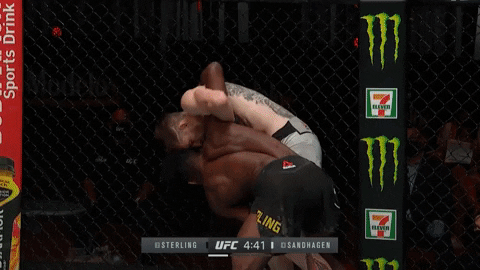
A good example of complete stonewalls are guys like Jose Aldo, or Georges St-Pierre.
Notice how good of an entry Koscheck managed to get, locking onto a single leg? GSP has already managed to stop the drive; I won’t go into why, since that’s cage TDD, but consider this the same principle in action. Josh then spends a solid 23 seconds failing to get anything done; this is a guy known for his insane drive on shots as I said. By stone wall, I mean that GSP is halting it without going past the first gear. Josh managed to eventually get him down, but it took an immense amount of effort to hulk his way past that barrier GSP offered. Given that Koscheck has like, the third or fourth best double leg in MMA history, this is. areally good look for GSP.
A failure of this would be if the wrestler can budge you. Not actually move around, but, to extend my previous metaphor, open the door.
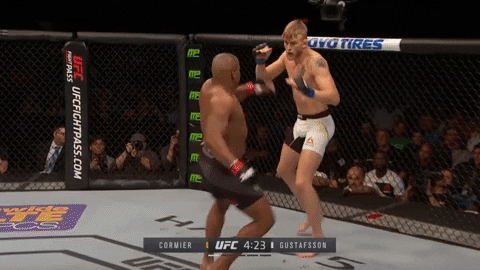
The key here is that Gus’ “barriers” weren’t strong enough to prevent Cormier from unlocking his door, or getting the position that he wanted. It’s alright if Cormier actually moved him and forced him to take a couple steps, but Cormier was able to break past the whizzer and grip, allowing him to unlock the next stage, the finish. As a result, Gus was taken down. Additionally, keeping your posture where you want it and breaking theirs is extremely important, otherwise their body is much stronger than yours, and they can get to their finishes easier.
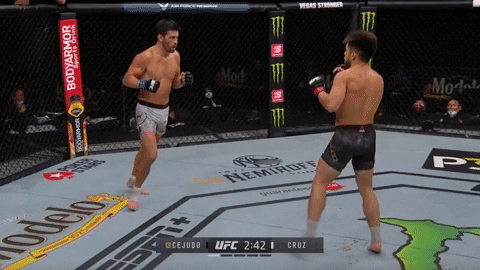
I’ll be going on a brief tangent about single leg defense by the way, so bear with me.
A lot of finishes from singles are either angling in and going for a crackdown/running the pipe, such as the Weidman clip showed, sitting them on their asses

Or angling all the way out to the side, the most extreme version being a tree-top, where the wrestler elevates his opponent’s leg and tries for a trip.
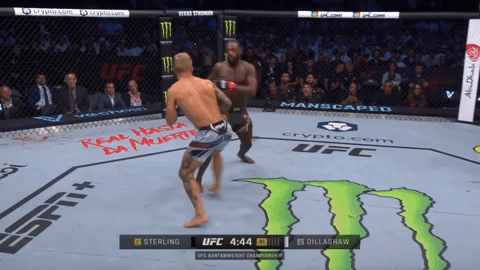
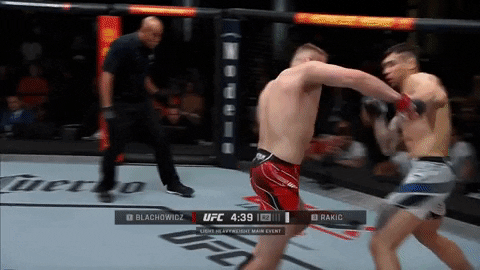
As a result, you need to have an answer to both. Good balance and a strong whizzer, hipping in, prevents them from running the pipe, while preventing the all the way out finish is about grip fighting.
GSP isn’t going all the way out, but he’s forcing Fitch’s head continually on the inside, destroying his drive and posture, and he’s prepared for the other response, switching to double. Additionally, his insane balance is letting him spin around and stay up, and he’s funneling Fitch towards his preferred areas, where he knows Fitch cannot finish.
However, the problem with being square on a single is not only that your limbs are hanging free for another finish, it also loses any pressure on their grip. GSP is shoving his head inside, and funneling towards what he wants. Damir is not doing that, compared to Penn here.
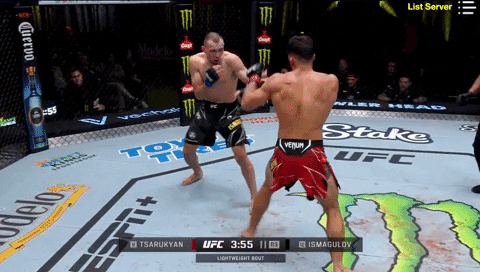
One of these is preventing the wrestler from going into longer exchanges by, like I said, funneling them into a certain position. St-Pierre and Penn are two that I’d put below Jose Aldo for the reason of staying square with their opponents sometimes, which just means less pressure on the wrestler’s grip, but they are able to put pressure on their opponent’s grip in other ways; when the opponent is square, they push the head down and inside, putting pressure on them despite the optimal response being to angle away. Damir failed to do that there, hence why he should’ve hipped away and outward, since he doesn’t have the built-in response of a Penn or GSP.
And notice the unbudgeable legs on singles? They kept them in the exact position they wanted the entire time, and made it impossible to even tree-top it in the first place. If that happens, you could always pull a Dodson.
If you’re in that position, splitting away and keeping your opposite foot away to avoid a trip, and keeping your posture and balance while working to get your leg back is the right response, but avoiding it in the first place is even better. I’d always rate a defensive wrestler who can just say “no” to the tree-top higher than one who has to cheat their way out of it.
You could also kick out of a tree-top by the way, which brings me to the final stage, and where I think St-Pierre struggled, separation. Once you’ve stone-walled the wrestler, making it so that they don’t even have a hold of you anymore is the perfect final response to takedown attempts, for obvious reasons.
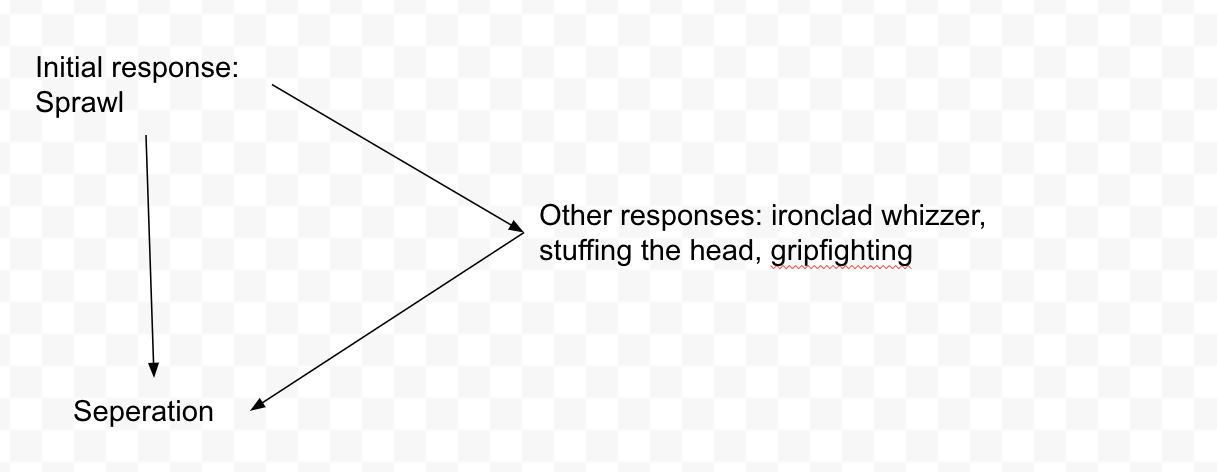
In my opinion, the best method for separation is limp legging; once again, Jose Aldo
It makes the leg a loose, easy thing to drag out, and does not require the explosive power of say, “Putting on the pants.” Scroll up, and notice how GSP, or even McGregor, all for their legs on the outside of their opponent’s legs. Like I said, this puts pressure on the grip, but Fitch and Eddie were able to stay in the sequences a little bit longer because putting on the pants doesn’t separate as fast as limp-legging. GSP and Conor did great otherwise, but separation, or giving the wrestler as little time as possible to work, is the final key that elevates guys like Aldo and Jones above others.
I would consider it more efficient, and more applicable to MMA. It also ties right into denying the wrestler their preferred angle; turning all the way away, like DJ’s shin whizzer, while their hands are occupied holding your leg, blocked by a whizzer or being fought off, means that they cannot just grab your turned away back, and in a sense, you are “square” with the, just in the opposite way.
For more balance-cheating, check this out
Obviously, failing to separate results in the chain sequence only being extended. And if you can’t balance cheat your way through, you can get stuck in it.
The thing is, however, that’s what some people want.
That, my dear reader, will be covered next time

